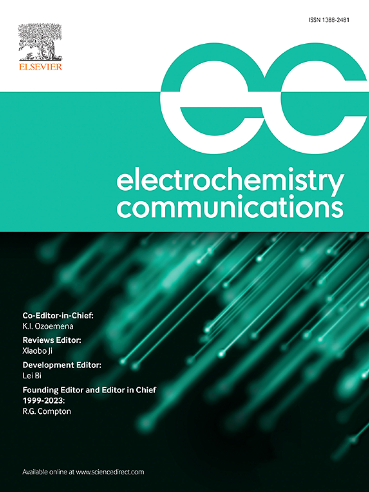Process compatibility analysis for hybrid electrochemical removal and accretion towards a multifunctional machine-tool: An application-oriented approach
IF 4.2
3区 工程技术
Q2 ELECTROCHEMISTRY
引用次数: 0
Abstract
The demand for multifunctional and multi-material parts has driven the development of hybrid manufacturing technologies. Laser-based additive and subtractive techniques offer design flexibility but are unsuitable for smart components, high-end aerospace and biomedical applications due to thermal defects. In contrast, electrochemical additive manufacturing (ECAM) and electrochemical machining (ECM) are non-contact in nature with minimal thermal load, which can preserve material properties while enabling material accretion and removal, respectively as governed by the Faraday's laws of electrolysis. However, sequential processing with ECM and ECAM is challenging to achieve on the same platform due to different compatible process windows, electrolytes, and localisation issues.
Therefore, this study presents successful hybridisation of maskless ECM and ECAM processes on a multifunctional machine-tool, enabling bi-directional feature fabrication (via ECAM) and shaping (via ECM) in one clamp, where the process localisation is achieved by an electrolyte confining air-column. The experiments examined the influence of process parameters and investigated process compatibility to demonstrate the potential of this hybrid technique. The air column at 1.1 bar improved process localisation by reducing the ECAM feature width by 60 % in comparison to no air-confinement (0 bar). Additionally, the best surface quality of ∼0.33 μm Sa with ECAM at 5 V was achieved at 50 % duty cycle with 20 μs pulse period as voltage pulsing allowed flushing of by-products from the interelectrode gap and shorter pulses reduced gas bubbles generation. Furthermore, it was possible to demonstrate layered manufacturing and mould repair applications using appropriate process parameters to avoid stray removal and accretion during bi-directional ECM and ECAM. These results represent a significant step in hybrid electrochemical manufacturing towards realising advanced multi-material and multi-functional component applications.
面向多功能机床的混合电化学去除和吸附过程相容性分析:一种面向应用的方法
对多功能和多材料零件的需求推动了混合制造技术的发展。基于激光的增材和减材技术提供了设计灵活性,但由于热缺陷,不适合智能部件、高端航空航天和生物医学应用。相比之下,电化学增材制造(ECAM)和电化学加工(ECM)本质上是非接触的,具有最小的热负荷,可以在保持材料特性的同时实现材料的吸附和去除,分别受法拉第电解定律的支配。然而,由于不同的兼容过程窗口、电解质和本地化问题,在同一平台上实现ECM和ECAM的顺序处理是具有挑战性的。因此,本研究在多功能机床上成功地实现了无遮罩ECM和ECAM工艺的混合,实现了双向特征制造(通过ECAM)和成形(通过ECM)在一个夹具中,其中通过电解液限制气柱实现工艺定位。实验考察了工艺参数的影响,并研究了工艺兼容性,以证明这种混合技术的潜力。与无空气限制(0 bar)相比,1.1 bar的空气柱通过将ECAM特征宽度减少60%,改善了工艺定位。此外,在5 V电压下,在占空比为50%、脉冲周期为20 μs的条件下,ECAM的表面质量达到了最好的~ 0.33 μm Sa,因为电压脉冲允许副产物从电极间隙中冲洗出来,并且较短的脉冲减少了气泡的产生。此外,可以使用适当的工艺参数演示分层制造和模具修复应用,以避免双向ECM和ECAM过程中的杂散去除和增加。这些结果代表了混合电化学制造朝着实现先进多材料和多功能组件应用迈出的重要一步。
本文章由计算机程序翻译,如有差异,请以英文原文为准。
求助全文
约1分钟内获得全文
求助全文
来源期刊

Electrochemistry Communications
工程技术-电化学
CiteScore
8.50
自引率
3.70%
发文量
160
审稿时长
1.2 months
期刊介绍:
Electrochemistry Communications is an open access journal providing fast dissemination of short communications, full communications and mini reviews covering the whole field of electrochemistry which merit urgent publication. Short communications are limited to a maximum of 20,000 characters (including spaces) while full communications and mini reviews are limited to 25,000 characters (including spaces). Supplementary information is permitted for full communications and mini reviews but not for short communications. We aim to be the fastest journal in electrochemistry for these types of papers.
 求助内容:
求助内容: 应助结果提醒方式:
应助结果提醒方式:


